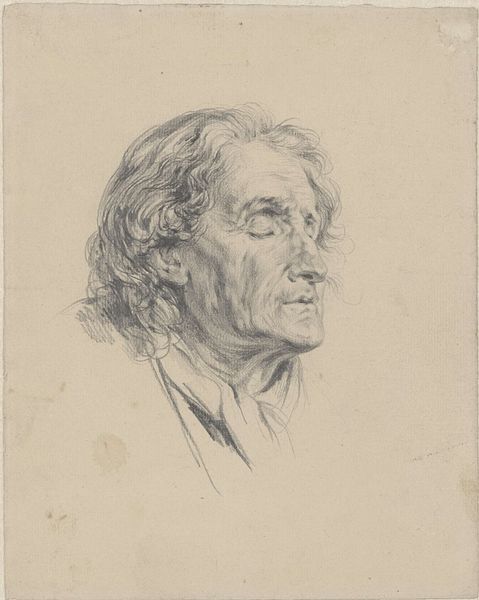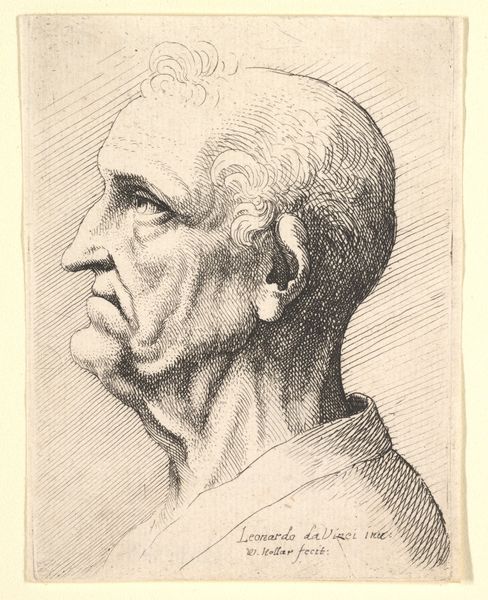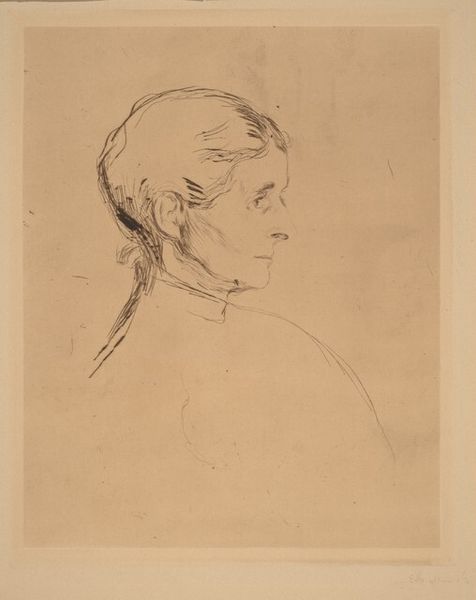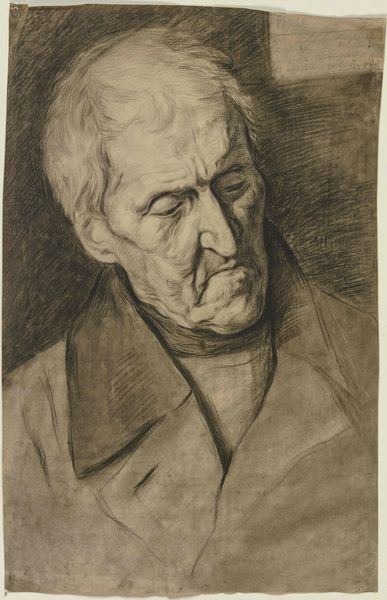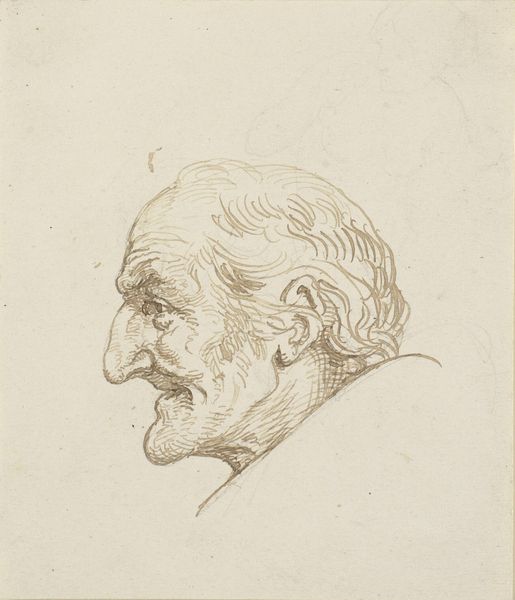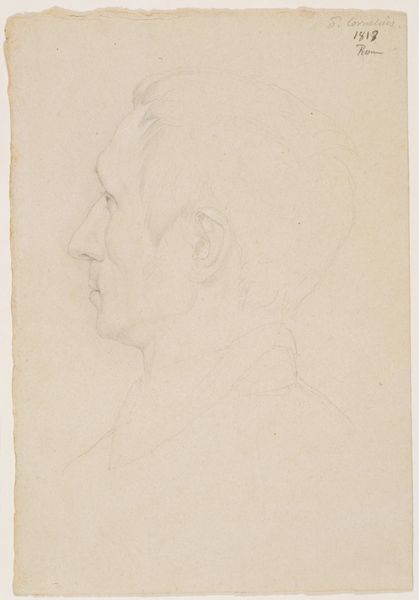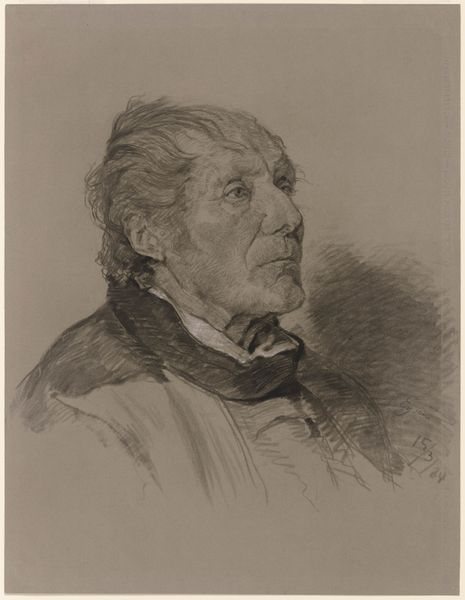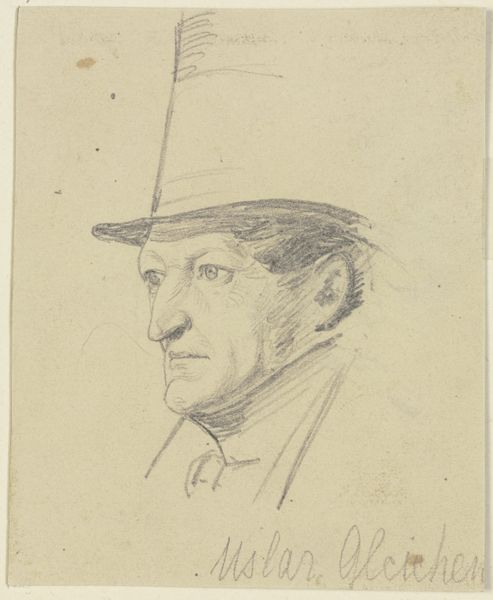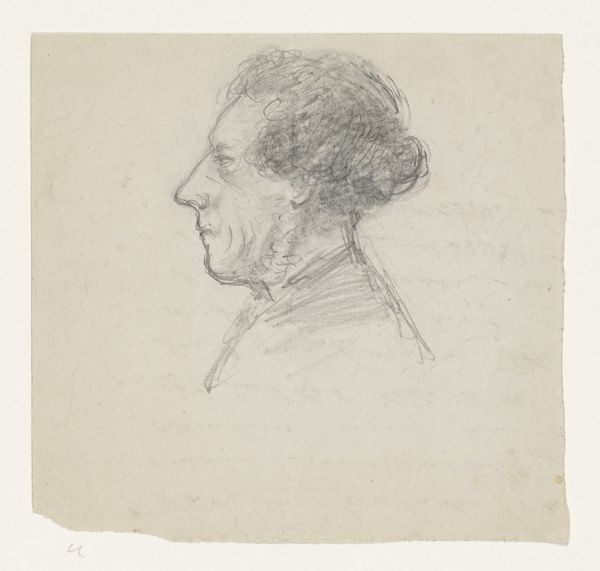
drawing, paper, pencil, chalk
#
portrait
#
drawing
#
paper
#
pencil
#
chalk
#
academic-art
#
realism
Copyright: Public Domain
Editor: This is "Head in profile," a drawing from 1827 by Theodor Pelissier, rendered in pencil and chalk on paper. I'm struck by the precision of the lines, creating such depth with minimal tonal variation. What do you notice, looking at it from a formalist perspective? Curator: Initially, the artist’s manipulation of light and shadow catches my eye. Observe how Pelissier uses chiaroscuro, employing sharp contrasts to define the planes of the face. Notice how the linear precision contrasts the subject's volume, achieved through carefully layered hatching. How does this tension between line and form affect your reading of the piece? Editor: It's interesting, I hadn't thought about it in those terms. The delicate hatching definitely softens what could have been a harsher, more graphic depiction, softening his features. It makes him seem… contemplative. Curator: Indeed. Now consider the composition itself. The artist isolates the head in profile against a neutral ground, eliminating any distracting contextual elements. The composition forces us to confront the essential formal elements of line, tone, and form. What does this focused presentation suggest to you? Editor: It suggests the importance of the study of form, almost like a scientific investigation. This is a great opportunity to observe how light and shadow interact with the planes of the face. Is it a pure exercise, or does it also suggest something about the sitter’s character? Curator: As a formalist, I can acknowledge but must sideline iconographic readings, or conjecture about the sitter. Primarily, I see a masterful study in artistic technique. Note the skill in rendering subtle variations in texture, from the hair to the skin. Editor: This focus on technique certainly provides a framework for appreciating the artist’s skill. It also gives me an approach to analyze the work, beyond my initial emotive reaction. Curator: Precisely. By engaging in formal analysis, we move toward a deeper understanding of the artistic strategies at play and perhaps find fresh perspectives on portraits such as these.
Comments
No comments
Be the first to comment and join the conversation on the ultimate creative platform.
